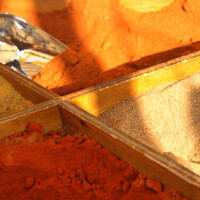





 It’s estimated that 50 to as high as 70% of people experiencing IC have spontaneous resolution of bladder pain symptoms or after a period of time go away entirely or move to a more manageable symptom complex. This is typified in the accompanying bell curve graph which shows to the left of the line those that have resolved completely or have manageable symptoms and those to the right who have repeated flares for an extended period of time.
It’s estimated that 50 to as high as 70% of people experiencing IC have spontaneous resolution of bladder pain symptoms or after a period of time go away entirely or move to a more manageable symptom complex. This is typified in the accompanying bell curve graph which shows to the left of the line those that have resolved completely or have manageable symptoms and those to the right who have repeated flares for an extended period of time.
This latter debilitated group of patients(CPPS) suffer not only unrelenting flares but lose marriages, relationships, and jobs leaving them on disability, helpless and with little positive outlook. I believe the urologist is equally frustrated with these tormented souls as the pharma tools that they have are often inadequate for the job. This is primarily because the origin of disease by the matter science is not understood and hence the pharma used is not targeted therapy.
Anyone with chronic interstitial cystitis(IC) with numerous trips to the urologist has experienced cystoscopy and catheterizations necessary to instill medicinal agents such as DMSO or medications such as heparin and steroid. Some patients who have severe frequency and urgency are taught to by some urologists to do self administered intermittent catheterization thinking that decreasing residuals might help these lower tract irritative symptoms.
The energy science of Ayurveda has used catheterization for 1000’s of years and it is called basti. There are many different forms of basti dependent on what locale of the body’s anatomy the healer wishes to treat. Basti is used for various disease states from eye disorders to low back pain to constipation.
Basti helps to target the specific imbalanced organ in this case the bladder but can also be used for vulvodynia or vaginal pain which I blogged about in the past using topically administered herbs placed by hand or tampon.
Recently in the past 12 years there has been growing interest in the cancer literature on “targeted therapy” which has been used to describe cancer treating molecules that specifically “target” specific cancer cell processes that arrest cancer growth. This avoids the broad chemotherapy effects that can be hard on treated patients.
I have described in previous posts that the origin of disease is understood from an energy science perspective to be an imbalance in qualities. When herbs are used they specifically “target” the imbalance in the organs that are symptomatic, in this case the bladder or vagina.
What herbs target the bladder lining and can be used safely for topical intravesical use? Let’s list them.
Aloe vera gel This time honored herb reduces the hot of inflammation and so is excellent when the Pitta energy pattern is causing the burning in the pelvic cavity as well as on urination or vaginal burning.
Cumin Coriander Fennel These three herbs are medicinal to the urinary tract since all are cooling to the bladder mucosa. Taken orally as a tea or making a decoction to deliver other herbs to the bladder mucosa can be therapeutically effective.
Goksura(aka Caltrops) This herb is an antiinflammatory and targets the urinary tract and can be effective in reducing stone formation hence suggesting that it is important in GAG layer function. It is also a nervine and shows the broad effects that happen to be characteristic of herbs in general. It is one of the roots in dashamula below.
Guduchi This is a commonly used herb for high Pitta conditions because it’s a rejuvenative for Pitta but has the unique quality of heating hence useful in toxic conditions which is often the case when there is longstanding IC.
Dashamula This is a combination of 1o roots all with specific properties hence the name which means 10 roots. Whenever there is Pitta in the tissue the tissue there is Vata as well and this herb is helpful in clearing the Vata energy pattern from the bladder wall.
Shatavari This herb is tissue building and great for high Pitta conditions. As I have said earlier it should not be used if there is a condition called polycystic ovarian syndrome.
Neem This is a commonly used antiinflammatory and great for high Vata conditions and debility.
If you know how to self cath then this type of therapy under guidance as to which herbs to use is fairly easy.
If you can’t cath then accessing your friendly urologist to help with the instillation of the tea can be done. The instillation schedule varies according to the clearance of symptoms but usually would be daily for at least 8 days while doing other therapies.
I have found basti as targeted therapy to be immensely rewarding for chronic IC over the years. Try it, you’ll like it!
To Health as a Skill DB
Get every new post delivered to your Inbox
Join other followers
Leave a Reply